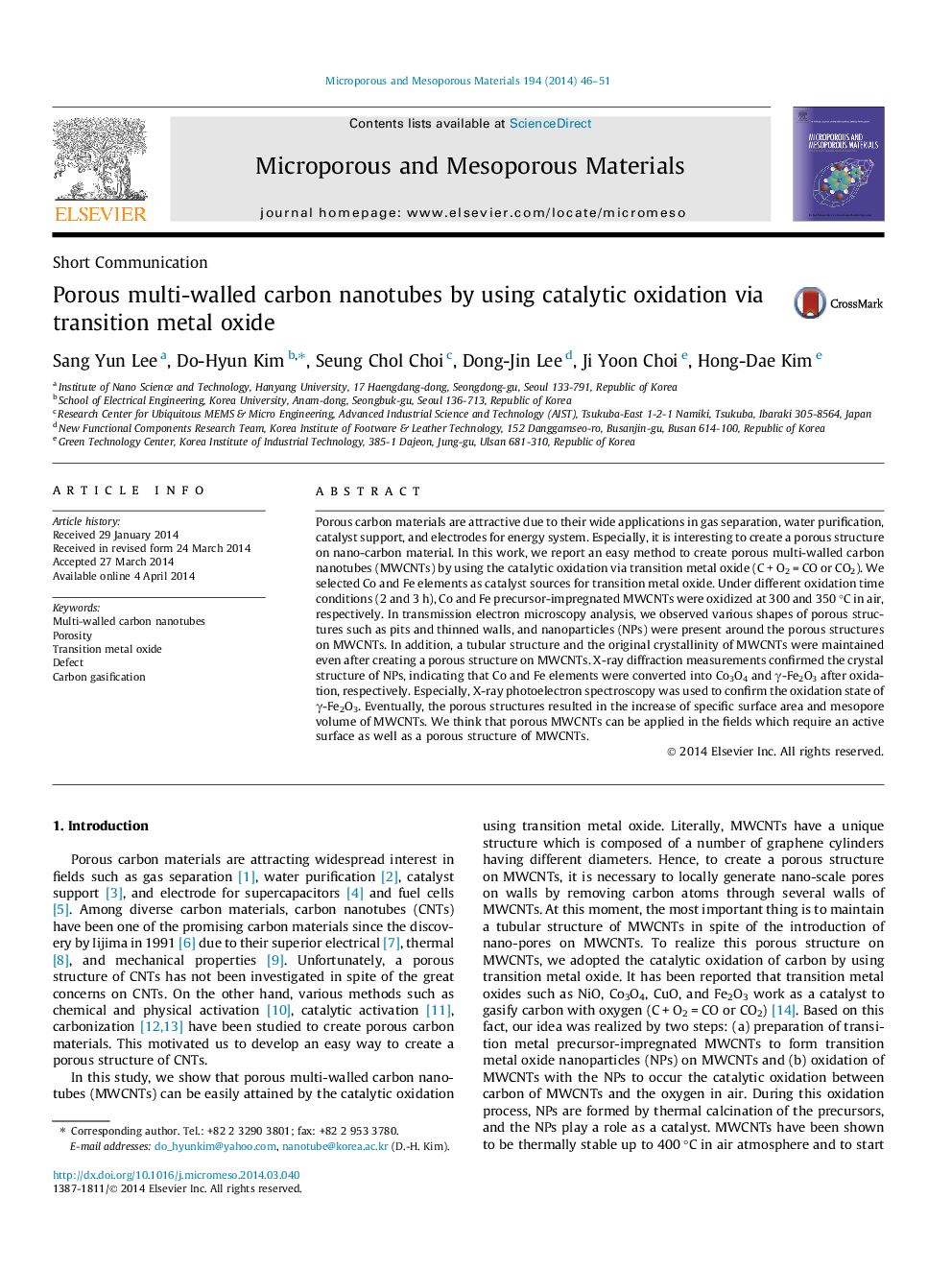| Article ID | Journal | Published Year | Pages | File Type |
|---|---|---|---|---|
| 73064 | Microporous and Mesoporous Materials | 2014 | 6 Pages |
•We show an easy way to fabricate porous multi-walled carbon nanotubes.•Co3O4 and γ-Fe2O3 nanoparticles work as a catalyst to create the porous structure.•The porous structure results in the increase of specific surface area of nanotubes.•The porous structure results in the increase of mesopore volume of nanotubes.•A tubular shape of nanotubes is kept even after creating the porous structure.
Porous carbon materials are attractive due to their wide applications in gas separation, water purification, catalyst support, and electrodes for energy system. Especially, it is interesting to create a porous structure on nano-carbon material. In this work, we report an easy method to create porous multi-walled carbon nanotubes (MWCNTs) by using the catalytic oxidation via transition metal oxide (C + O2 = CO or CO2). We selected Co and Fe elements as catalyst sources for transition metal oxide. Under different oxidation time conditions (2 and 3 h), Co and Fe precursor-impregnated MWCNTs were oxidized at 300 and 350 °C in air, respectively. In transmission electron microscopy analysis, we observed various shapes of porous structures such as pits and thinned walls, and nanoparticles (NPs) were present around the porous structures on MWCNTs. In addition, a tubular structure and the original crystallinity of MWCNTs were maintained even after creating a porous structure on MWCNTs. X-ray diffraction measurements confirmed the crystal structure of NPs, indicating that Co and Fe elements were converted into Co3O4 and γ-Fe2O3 after oxidation, respectively. Especially, X-ray photoelectron spectroscopy was used to confirm the oxidation state of γ-Fe2O3. Eventually, the porous structures resulted in the increase of specific surface area and mesopore volume of MWCNTs. We think that porous MWCNTs can be applied in the fields which require an active surface as well as a porous structure of MWCNTs.
Graphical abstractFigure optionsDownload full-size imageDownload as PowerPoint slide
